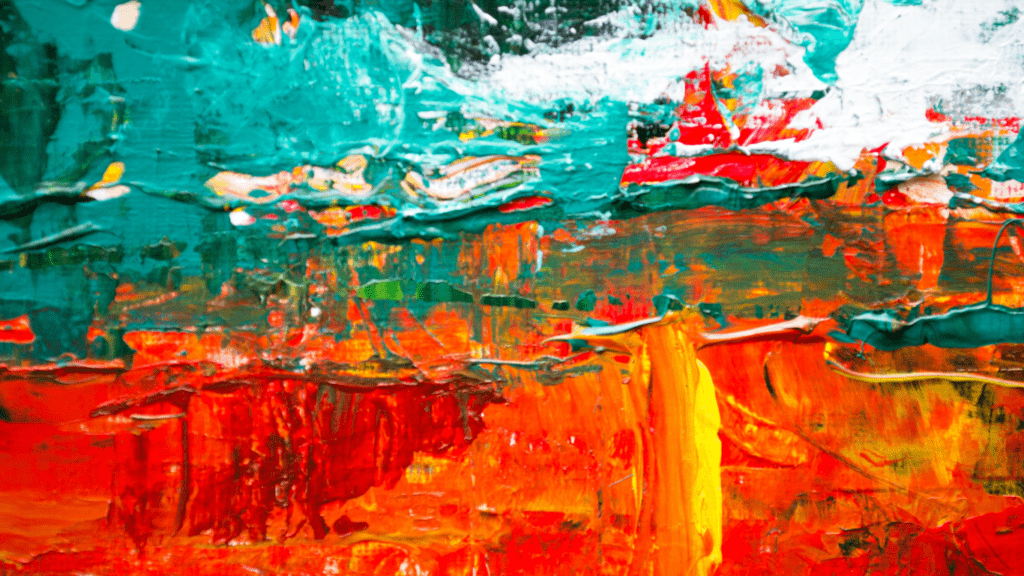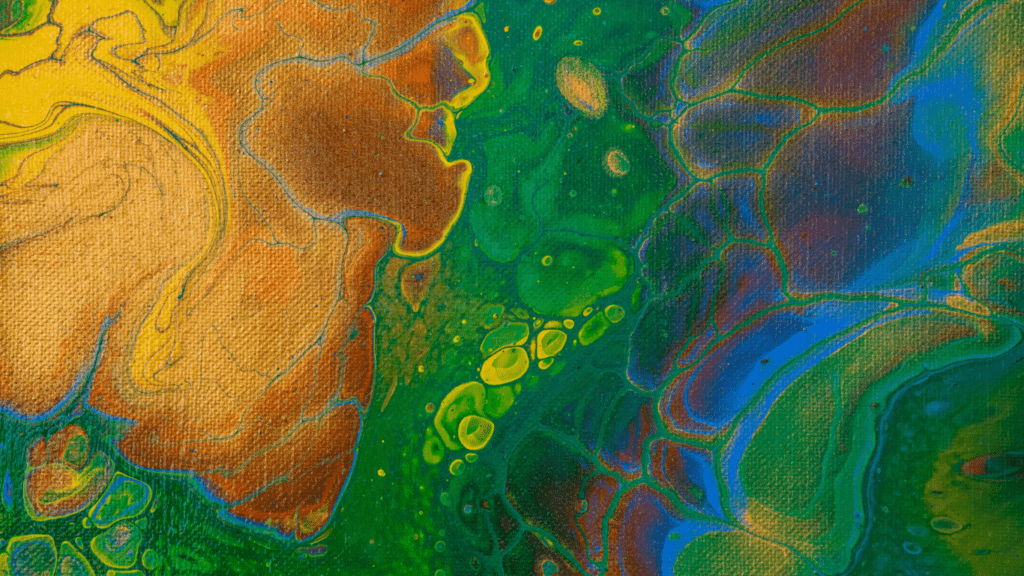Origins of Abstract Expressionism in New York
Abstract Expressionism emerged in New York City during the mid-20th century. This section covers its roots, examining the post-war American context and key figures who influenced the movement.
The Role of Post-War America
Post-war America provided fertile ground for Abstract Expressionism. The end of World War II brought significant socioeconomic changes. The United States emerged as a global superpower, which encouraged cultural and artistic experimentation. Artists sought new ways to express the complexities of post-war emotions and realities. Many felt that traditional artistic techniques couldn’t capture these complexities, leading them to create innovative and non-representational art forms.
Key Figures and Influencers
Several key figures shaped Abstract Expressionism in New York. Jackson Pollock, known for his drip painting technique, became a symbol of the movement’s raw energy. Willem de Kooning introduced intricate brushwork and bold colors, adding emotional depth. Mark Rothko’s color field paintings explored the psychological effects of color combinations, while Barnett Newman’s ‘zips’ emphasized simplicity and emotional resonance. These artists, among others, collectively redefined modern art by prioritizing emotion, freedom, and innovation over conventional forms.
Defining Characteristics of Abstract Expressionism

Abstract Expressionism, known for its emotional depth and innovative techniques, reshaped modern art’s trajectory.
Techniques and Methods
Abstract Expressionist artists employed unique techniques that broke from traditional methods. They frequently used large canvases to create immersive experiences. For example, Jackson Pollock’s “drip painting” technique involved dripping or pouring paint onto the canvas, creating intricate patterns. Willem de Kooning often used aggressive brushwork, applying paint rapidly to convey motion and emotion. Mark Rothko, by contrast, used color field painting, applying large areas of a single color to evoke contemplation. These diverse techniques illustrated the movement’s emphasis on spontaneity and personal expression.
Themes and Motifs
The themes in Abstract Expressionism varied but often revolved around exploring human emotion and the subconscious. Artists like Pollock and de Kooning delved into the chaotic nature of existence, reflecting post-war despair and hope. Rothko’s work, with its large, contemplative color fields, sought to access deeper emotional and spiritual experiences. Barnett Newman’s use of “zips,” vertical lines running through his canvases, symbolized existence’s basic forces. These motifs revealed a shared focus on creating deeply personal yet universally resonant works.
The Initial Reception in New York
Abstract Expressionism made waves when it first emerged in New York during the 1940s. The movement’s innovative approach drew mixed reactions from critics and the public.
Critical Responses
Critics offered divergent views on the Abstract Expressionist movement. Some praised its avant-garde techniques and emotional depth, calling it a groundbreaking departure from traditional art forms. These critics identified the raw, unfiltered expression of human emotion as the movement’s strength. However, other art critics dismissed the movement as chaotic and lacking in technique. They argued that Abstract Expressionism’s emphasis on spontaneity diluted artistic skill and craftsmanship.
Public Perception
The general public’s reaction mirrored the critics’ divided opinions. Art enthusiasts and younger audiences found the movement’s bold colors and dynamic forms exciting and revolutionary. They appreciated the break from convention and the emotive power of the works. In contrast, more conservative viewers saw Abstract Expressionism as confusing and even incomprehensible. They preferred more traditional, figurative art over the abstract and often intense imagery presented by Abstract Expressionist artists.
In the years that followed, as the art world in New York grew to understand and appreciate the movement’s objectives better, Abstract Expressionism began to gain wider acceptance and respect both locally and globally.
The Movement’s Expansion Beyond New York
Abstract Expressionism quickly spread beyond New York, impacting the global art scene significantly. The movement’s raw energy and emotional depth resonated with artists and galleries worldwide, elevating it to international prominence.
Key Exhibitions and Galleries
Several key exhibitions and galleries played vital roles in the spread of Abstract Expressionism.
- The Museum of Modern Art (MoMA) in New York hosted significant exhibitions, such as the 1958 “The New American Painting” tour, which showcased works from leading Abstract Expressionists. This tour traveled to eight European cities, introducing the movement to an international audience.
- Peggy Guggenheim’s Art of This Century gallery fostered abstract expressionist artists by providing a dedicated space in New York. Her gallery’s exhibitions, such as Jackson Pollock’s first solo show in 1943, were essential in promoting Abstract Expressionism.
International Reach
Abstract Expressionism’s influence quickly extended across the globe, impacting artistic communities in Europe, Latin America, and Asia. European artists like Antoni Tàpies in Spain and Yves Klein in France embraced the movement, integrating its dynamic forms and bold colors into their work. In Latin America, artists such as Fernando de Szyszlo in Peru found inspiration in Abstract Expressionism’s emotional intensity.
Furthermore, the movement reached Asian countries through exhibitions and cultural exchanges. Japanese artist Kazuo Shiraga, a member of the Gutai group, adopted the spontaneous techniques of Abstract Expressionism, creating works that echoed the movement’s emphasis on personal expression and raw energy.
By the 1960s, Abstract Expressionism had firmly established itself as a global phenomenon, influencing a new generation of artists and reshaping the landscape of contemporary art.
Influences on Global Art Movements
Abstract Expressionism’s spread from New York to the world redefined contemporary art, leaving an indelible mark on various global art movements.
Impact in Europe
European artists integrated Abstract Expressionism into their practices. Influential artists like Gerhard Richter and Antoni Tàpies adapted its spontaneity and emotive depth, creating works that resonated with European sensibilities. Major European cities, including Paris and London, hosted exhibitions, with institutions like the Tate Gallery showcasing American Abstract Expressionists. This cross-pollination reinvigorated European post-war art, blending American boldness with local traditions.
Influence in Asia
Asian artists found Abstract Expressionism’s forms and philosophy compelling. Japanese artists, for instance, incorporated its aesthetics into the Gutai movement, emphasizing raw creativity and unconventional materials. In South Korea, artists like Kim Whanki fused traditional techniques with Abstract Expressionism, producing innovative pieces. Major Asian cities, such as Tokyo and Seoul, exhibited works of both American and local Abstract Expressionists, fostering a unique synthesis that enriched modern Asian art.
Legacy of Abstract Expressionism
Abstract Expressionism’s legacy in the art world is profound, influencing countless subsequent movements and artists globally.
Contribution to Contemporary Art
- Abstract Expressionism laid the foundation for various contemporary art forms.
- It pushed the boundaries of traditional art, emphasizing emotional depth and spontaneity.
- Artists like Jackson Pollock and Mark Rothko inspired subsequent generations to explore bold, unstructured methods.
- The movement’s emphasis on individual expression and creative freedom became a core principle for contemporary artists.
- Many modern art forms, including Pop Art and Minimalism, found their roots in Abstract Expressionism’s radical departure from conventions.
- The integration of large canvases and bold color fields from this movement distinctly shaped the visual aesthetics of modern and postmodern art.
Ongoing Relevance
The movement remains highly relevant today. Abstract Expressionism’s principles continue to inform and inspire contemporary artists. Art schools worldwide incorporate its techniques and philosophies into their curricula. Museums and galleries regularly feature retrospective exhibitions, keeping the movement alive in public consciousness.
Works by Abstract Expressionist masters command high prices at auctions, emphasizing their enduring value. Additionally, the movement’s influence extends beyond:
- visual arts
- impacting literature
- music
- film
where themes of existentialism and personal expression resonate deeply. The global art community still regards Abstract Expressionism as a pivotal force that reshaped the landscape of modern art.





